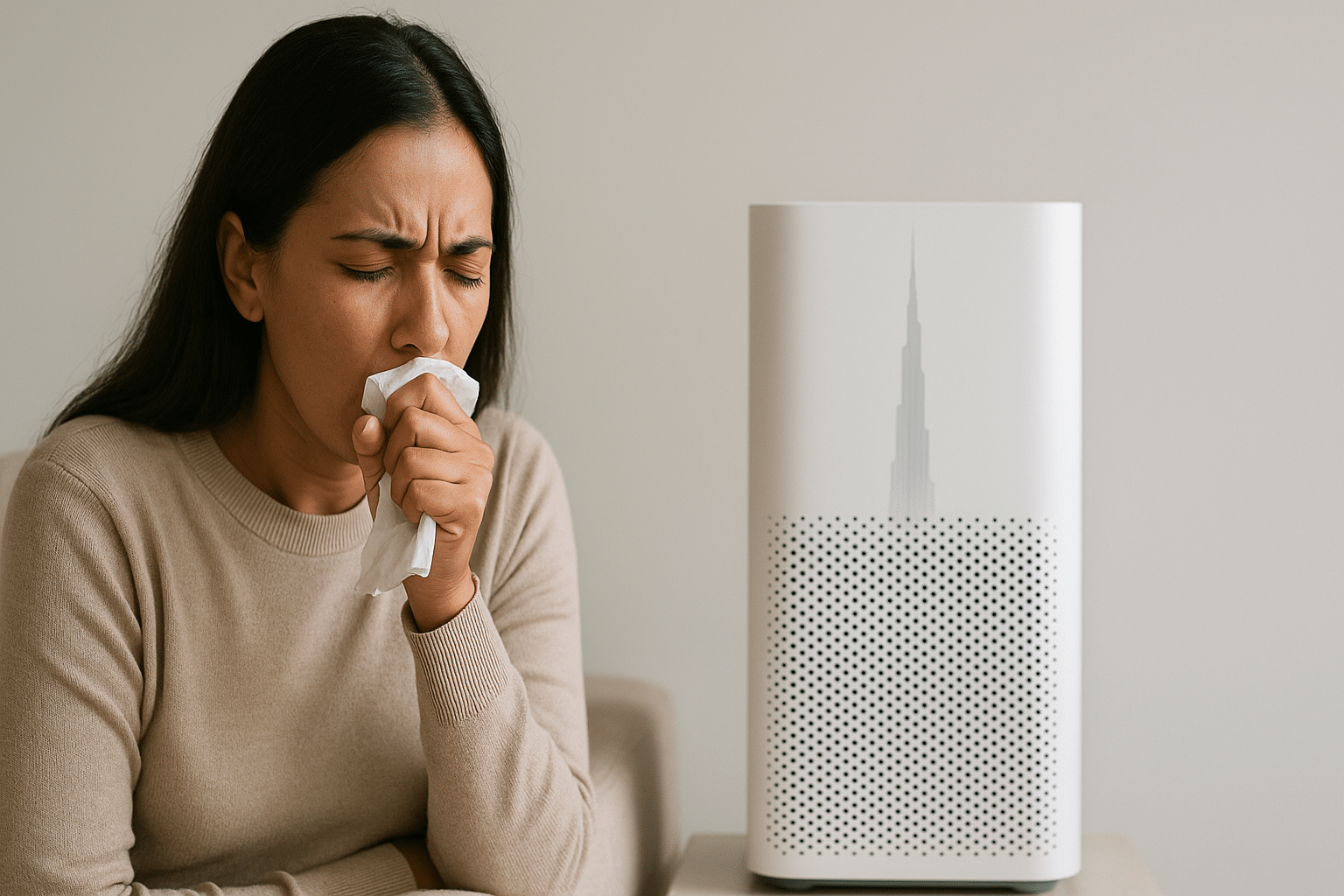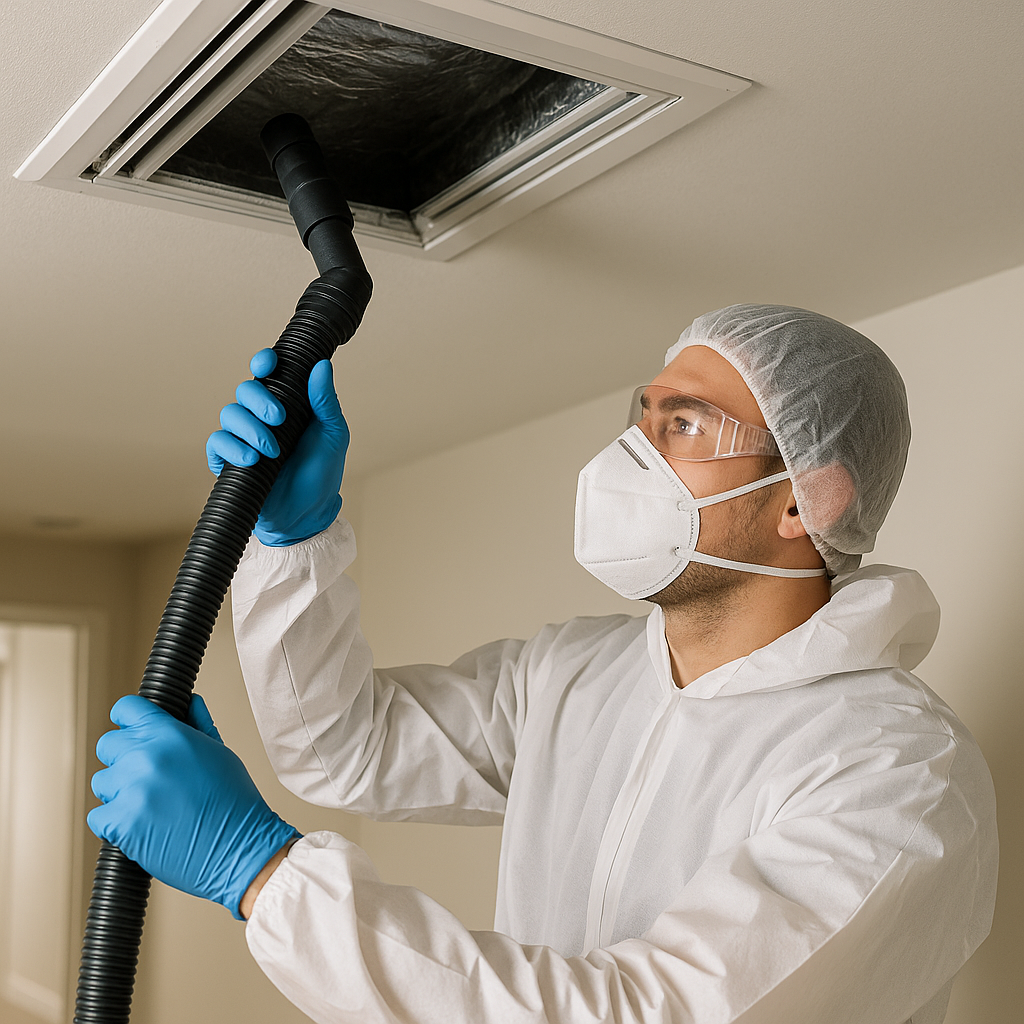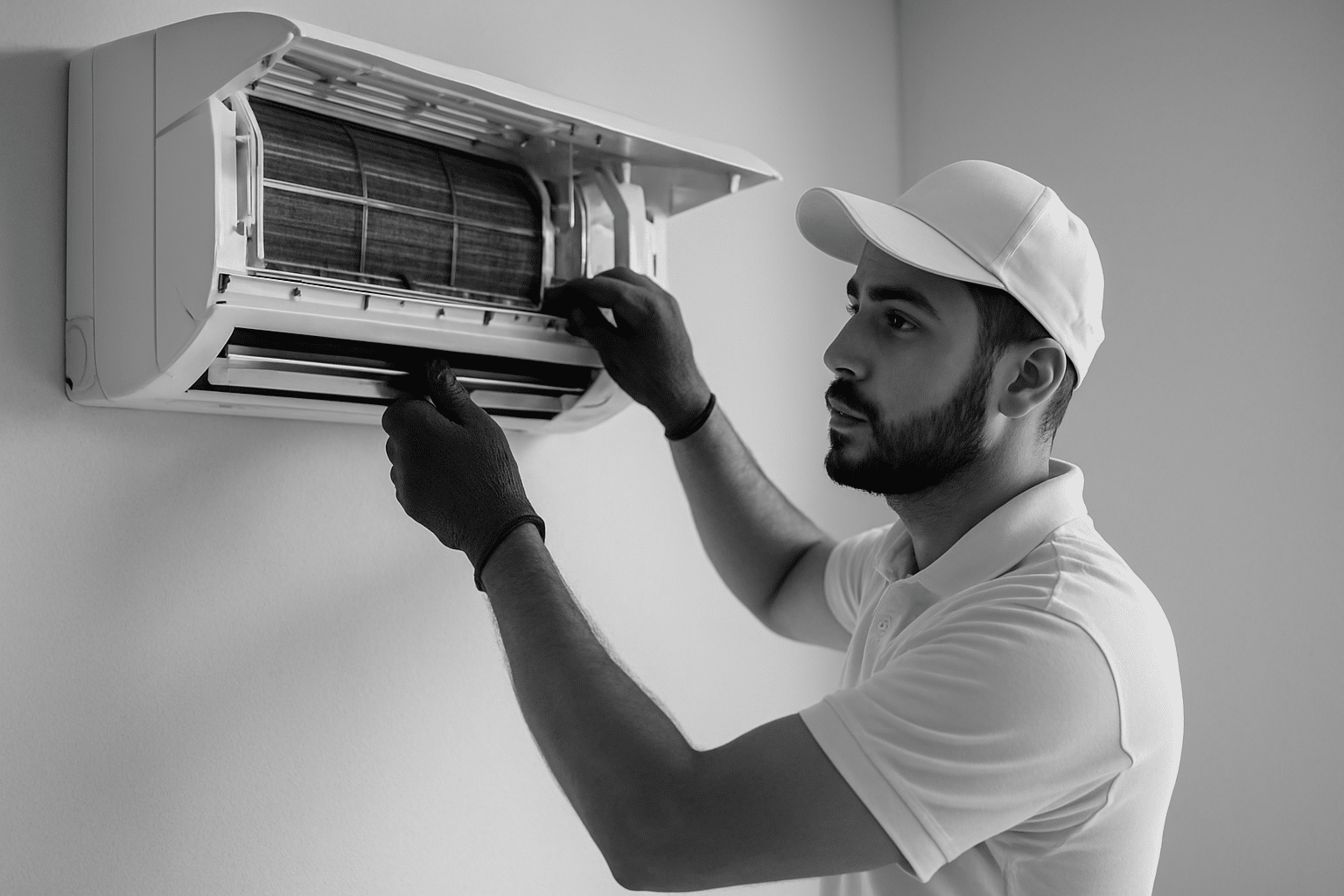
10 Critical Health Risks of Poor Indoor Air Dubai and Smart Tips to Improve It
Table of Contents
Contents
- 1 Table of Contents
- 2 Introduction: Understanding the Health Risks of Poor Indoor Air Dubai
- 3 Common Sources of Poor Indoor Air Quality in Dubai Homes
- 4 Health Risks of Poor Indoor Air Dubai: Understanding the Impact on Residents
- 5 10 Key Health Risks of Poor Indoor Air Dubai
- 5.1 1. Respiratory Infections and Diseases
- 5.2 2. Allergic Reactions
- 5.3 3. Asthma Exacerbation
- 5.4 4. Headaches and Fatigue
- 5.5 5. Cardiovascular Effects
- 5.6 6. Cognitive and Developmental Impairments
- 5.7 7. Skin Problems
- 5.8 8. Eye, Nose, and Throat Irritation
- 5.9 9. Increased Risk of Lung Cancer
- 5.10 10. Sick Building Syndrome
- 6 How to Improve Indoor Air Quality in Dubai: Practical Steps
- 7 The Role of Technology in Maintaining Healthy Indoor Air
- 8 Dubai-Specific Regulations & Guidelines on Indoor Air Quality
- 9 Why Choosing Professional Indoor Air Services Matters in Dubai
- 10 Conclusion and Call to Action
Introduction: Understanding the Health Risks of Poor Indoor Air Dubai
The health risks of poor indoor air Dubai residents face remain an often overlooked but critical public health issue. As people spend nearly 90% of their time indoors, the quality of air inside homes and offices profoundly affects well-being and productivity. Dubai’s unique climate and rapid urban development have created environments where indoor air pollution can thrive, increasing the risk of respiratory and other chronic health conditions.
This article delves into the root causes, identifies 10 critical health risks of poor indoor air Dubai communities experience, and presents smart, actionable tips to improve the air quality inside your home or workplace effectively.
Common Sources of Poor Indoor Air Quality in Dubai Homes
Poor indoor air quality in Dubai typically stems from a mix of factors unique to the region’s urban and environmental landscape. Understanding these sources is fundamental to addressing the health risks of poor indoor air Dubai residents suffer.
Key contributors include:
- Construction dust and VOCs: The booming real estate development in Dubai leads to residual dust, volatile organic compounds (VOCs), and chemicals being trapped inside buildings.
- Outdoor air pollution: Dust storms combined with vehicle emissions in busy areas such as Business Bay and Dubai Marina exacerbate indoor pollution when windows or ventilation systems exchange air with the outdoors.
- Air conditioning systems: Improperly maintained HVAC units can harbor mold, bacteria, and allergens, spreading them throughout indoor spaces.
- Household chemicals and cleaning products: Many commercial cleaning agents emit airborne irritants affecting sensitive individuals.
- Smoking indoors: Tobacco smoke remains a significant indoor pollutant that aggravates respiratory conditions.
- Pet dander and dust mites: Common allergens found in many Dubai homes.
Health Risks of Poor Indoor Air Dubai: Understanding the Impact on Residents
Indoor air quality is an increasingly critical concern in Dubai, where rapid urbanization, desert climate, and high population density converge to create unique environmental challenges. The health risks of poor indoor air Dubai are significant, affecting millions who spend most of their time inside residential, commercial, or public buildings across localities such as Downtown Dubai, Dubai Marina, Business Bay, and Arabian Ranches. Awareness of these risks is essential not only for individual well-being but also for public health management within the emirate.
Indoor air pollution arises from various sources, including building materials, household chemicals, cooking fumes, air conditioning systems, and infiltration of outdoor pollutants like desert dust and vehicle emissions. In Dubai, where temperatures often exceed comfortable outdoor limits, residents tend to remain indoors for longer durations, increasing exposure to stagnant or contaminated air. As such, poor indoor air quality presents multiple health hazards that can range from minor irritations to chronic conditions.
Short-Term Health Effects
Exposure to poor indoor air often triggers immediate and acute symptoms, commonly affecting the respiratory system, eyes, and skin. These short-term health effects may seem manageable when isolated, but recurring or continual exposure can worsen the condition or impair quality of life.
- Respiratory Irritation: Pollutants such as dust mites, mold spores, pet dander, and volatile organic compounds (VOCs) from household products cause coughing, wheezing, nasal congestion, and throat irritation. In Dubai, where air conditioning systems are prevalent, improperly maintained units can become breeding grounds for mold and bacteria, exacerbating breathing problems.
- Allergic Reactions: Indoor allergens often produce symptoms like sneezing, itchy eyes, and skin rashes. The desert environment also contributes fine particulate matter infiltrating homes, which intensifies these irritations.
- Headaches and Fatigue: Chemical pollutants—including formaldehyde from furniture and cleaning agents—can provoke headaches, dizziness, and fatigue, impacting everyday functioning and productivity.
These short-term symptoms are especially concerning for sensitive groups in Dubai, such as children attending nurseries and schools in areas like Nad Al Sheba or Business Bay, the elderly, and those with underlying health issues, where symptoms may compound and escalate rapidly.
Long-Term Health Effects and Chronic Diseases
Beyond the immediate discomfort, the health risks of poor indoor air Dubai extend into more serious, long-term consequences. Prolonged exposure to contaminated indoor air can lead to or exacerbate chronic health conditions that place additional burdens on Dubai’s healthcare system and residents’ quality of life.
1. Respiratory Diseases
Chronic exposure to airborne irritants and pollutants indoors can cause or worsen respiratory diseases such as asthma, chronic obstructive pulmonary disease (COPD), and bronchitis. In Dubai, where environmental dust and pollution levels can spike seasonally, these conditions demand careful management and preventative measures. Research supported by Dubai Health Authority (DHA) highlights that poor indoor air quality significantly increases respiratory hospital admissions during dust storms and summer months.
2. Cardiovascular Problems
Recent studies emphasize the role of fine particulate matter (PM2.5), which easily penetrates indoor environments, in causing cardiovascular problems. Residents of densely populated districts like Dubai Marina and Business Bay may face higher risks of hypertension, heart attacks, and stroke due to persistent exposure to the health risks of poor indoor air Dubai.
3. Impact on Mental Health and Cognitive Function
Emerging evidence points to poor indoor air quality impairing cognitive performance, concentration, and overall mental well-being. This is particularly relevant in the context of Dubai’s growing workforce and the prevalence of remote work or study at home in communities such as Arabian Ranches and Medos, where indoor environments must support healthy decision-making and productivity.
4. Increased Risk of Infections
Buildings with inadequate ventilation and poor hygiene environments can promote the spread of airborne bacterial and viral infections. This fact gained prominence during the COVID-19 pandemic and remains critical for offices and public spaces throughout Dubai. The Dubai Municipality enforces air quality standards and ventilation requirements under the UAE Fire & Life Safety Code to mitigate these risks.
Key Indoor Pollutants Contributing to Health Risks in Dubai
To better understand the health risks of poor indoor air Dubai, it is essential to identify the key pollutants commonly found indoors across the city’s diverse environments.
- Particulate Matter (PM2.5 and PM10): Fine particles originating from desert dust storms infiltrate buildings, settling on surfaces and suspending in the air.
- Volatile Organic Compounds (VOCs): Emitted from paints, adhesives, furniture, and cleaning agents prevalent in Dubai’s rapidly built homes and offices.
- Biological Contaminants: Mold, bacteria, dust mites, and pet dander thrive in humid or unclean conditions, facilitated by Dubai’s increasing reliance on air conditioning without adequate maintenance.
- Carbon Monoxide (CO): Poorly ventilated kitchens or malfunctioning gas appliances, though less common in regulated Dubai buildings, still pose a risk.
- Radon: While generally more of a concern in other regions, radon levels may still be monitored in soil-ventilated buildings in Dubai as a precaution.
Mitigating the Health Risks: Community and Regulatory Responses
Dubai authorities recognise the gravity of health risks associated with poor indoor air and have implemented multiple measures to protect residents. The Dubai Municipality sets strict guidelines on building codes, ventilation standards, and environmental inspections to maintain acceptable indoor air quality levels. In addition, the Dubai Health Authority promotes public education campaigns highlighting the importance of clean indoor environments for overall health.
Residents and building managers are encouraged to:
- Regularly service and clean HVAC and air conditioning units to prevent mold and bacterial growth.
- Limit the use of chemical products indoors and choose low-VOC paints and materials whenever possible.
- Maintain adequate ventilation, especially in kitchens and bathrooms, to reduce indoor humidity and pollutants.
- Use air purifiers equipped with HEPA filters in high-density residential areas such as Dubai Marina and Downtown Dubai.
- Conduct periodic indoor air quality assessments especially in buildings housing sensitive populations, such as schools and elder care centers.
By understanding and addressing the health risks of poor indoor air Dubai, residents, businesses, and policymakers can collaborate to cultivate healthier indoor environments that enhance the wellbeing of all who live and work in this vibrant emirate.
10 Key Health Risks of Poor Indoor Air Dubai
Recognizing the health risks of poor indoor air Dubai residents face is essential for taking timely preventive measures. The effects can be short-term or chronic and affect all age groups, especially vulnerable populations like children and the elderly.
1. Respiratory Infections and Diseases
Dust and microbial contamination indoors increase the incidence of infections such as bronchitis and pneumonia. Prolonged exposure worsens chronic respiratory illnesses like asthma and COPD.
2. Allergic Reactions
Common indoor allergens, including dust mites, mold spores, and pet dander, trigger allergic rhinitis, skin rashes, and eye irritation among sensitive individuals.
3. Asthma Exacerbation
Dubai’s dry climate combined with airborne indoor irritants can intensify asthma symptoms and increase attack frequency, impacting daily life and work productivity.
4. Headaches and Fatigue
Exposure to volatile organic compounds (VOCs) and poor ventilation can cause frequent headaches, fatigue, and difficulty concentrating, reducing overall quality of life.
5. Cardiovascular Effects
Studies suggest that long-term exposure to indoor air pollutants can increase risks related to high blood pressure and heart disease.
6. Cognitive and Developmental Impairments
Poor indoor air quality can affect cognitive function, especially in children, reducing learning abilities and causing developmental delays.
7. Skin Problems
Continuous exposure to pollutants and low humidity indoors can lead to dry skin, eczema flare-ups, and other dermatological concerns.
8. Eye, Nose, and Throat Irritation
The health risks of poor indoor air Dubai extend to irritation of mucous membranes causing watering eyes, sore throat, and nasal congestion.
9. Increased Risk of Lung Cancer
Indoor pollutants such as tobacco smoke and some VOCs carry carcinogenic compounds increasing lung cancer risk over time.
10. Sick Building Syndrome
Many commercial buildings in Dubai experience poor ventilation and pollutant buildup, resulting in occupants experiencing multiple symptoms collectively known as Sick Building Syndrome.
How to Improve Indoor Air Quality in Dubai: Practical Steps
Given the 10 critical health risks of poor indoor air Dubai faces, taking action to improve indoor air is not optional but necessary. Here are practical, effective tips you can follow to safeguard health.
1. Regular HVAC Maintenance
Schedule professional cleaning of air conditioning systems to remove mold and dust buildup. Change filters according to manufacturer guidelines to ensure optimal air filtration.
2. Increase Ventilation
When weather permits, open windows in areas like Downtown Dubai apartments to allow fresh air circulation. Use exhaust fans in kitchens and bathrooms to remove moisture and odors.
3. Use Air Purifiers
Opt for air purifiers with HEPA filters to trap fine particles including allergens and bacteria indoors, especially in bedrooms and workspaces.
4. Control Humidity Levels
Maintain indoor humidity between 30%-50% using dehumidifiers or humidifiers to prevent mold growth and dust mite proliferation.
5. Minimize Indoor Pollutant Sources
- Choose low-VOC paints and cleaning products.
- Avoid smoking indoors.
- Reduce use of synthetic fragrances and aerosols.
6. Keep Indoor Spaces Clean
Regular dusting and vacuuming with HEPA-filter vacuums reduce allergens and dust mites.
7. Use Plants Wisely
Certain houseplants can help improve indoor air quality but require maintenance to avoid mold and pests.
8. Monitor Air Quality
Use indoor air quality monitors to detect pollutant spikes and take timely corrective actions.
The Role of Technology in Maintaining Healthy Indoor Air
Technological advancements play a pivotal role in tackling the health risks of poor indoor air Dubai experiences. Smart sensors, advanced filtration systems, and IoT-enabled HVAC units provide precise control over air quality indoors. These tools allow Dubai residents to monitor and manage their air environments actively, helping prevent long-term health impacts.
For instance, integrating industry standards and certifications to mitigate the health risks of poor indoor air Dubai ensures that cleaning and maintenance services follow strict guidelines, improving indoor air effectively.
Dubai-Specific Regulations & Guidelines on Indoor Air Quality
Dubai authorities have established several regulations and guidelines to address indoor air quality due to environmental and public health concerns.
- Dubai Municipality: Mandates standards for building ventilation systems and indoor pollution control.
- Dubai Health Authority (DHA): Provides health advisories related to indoor air and promotes awareness.
- Dubai Health & Safety Regulations: Include occupational safety measures to ensure indoor air quality in workplaces.
Compliance with these guidelines is vital to mitigate the health risks of poor indoor air Dubai faces daily.
Why Choosing Professional Indoor Air Services Matters in Dubai
Addressing these indoor air quality challenges in Dubai requires specialized knowledge and technology. Professional service providers like Saniservice, specialists in mitigating the health risks of poor indoor air Dubai, offer expert cleaning and maintenance tailored to Dubai’s indoor air challenges.
They ensure comprehensive HVAC system cleaning, pollutant source control, and functionality improvement, ensuring safer indoor environments for residences and offices in Dubai localities such as Medos, Arabian Ranches, and Nad Al Sheba.
Conclusion and Call to Action
The risks associated with poor indoor air in Dubai are significant but preventable. By understanding the sources of indoor pollution and adopting practical air quality improvement steps, you can protect your family and workforce from serious health issues.
Act today by assessing your indoor air environment and consulting professionals to ensure your HVAC systems meet Dubai’s standards. Protect your health, improve comfort, and enhance productivity with cleaner indoor air.






Leave a Reply